USV - Unmanned Vessels
Enabling Remote Control of Unmanned Surface Vehicles with SoftRadio
Currently, significant research efforts are focused on the development and deployment of Unmanned Surface Vehicles (USVs) for maritime operations.
The goal is to enable these vessels to operate autonomously across seas, inland waterways, lakes, and harbors.
Although these vessels are unmanned, they still require onboard Marine Radios, which must be remotely controlled from onshore.
This is where SoftRadio provides a crucial solution.

User Video
One of our customers has created a video showcasing how they remotely control ships navigating Belgium’s inland waterways from their control center in Antwerp.
The video demonstrates how SoftRadio enables seamless remote operation of onboard marine VHF radios.
Remote Control Of Onboard Radios
For safety and operational efficiency, vessels must be equipped with a marine radio that can be remotely controlled by a dispatcher at a shore-based marine control center. This allows the dispatcher to communicate with nearby ships as if they were onboard.
To enable remote operation, the vessel requires an IP connection, either via 4G/5G when near shore or satellite when further out at sea.
The onboard radios connect to network interfaces, linking them to the dispatcher’s PC over the IP network.
While Marine VHF radios are the most common, other communication systems, such as MF/HF radios, onboard intercoms, and Navtex, can also be integrated. Signaling methods like DSC and ATIS are supported.
Learn more about DSC and ATIS on the MarineCalls page and satellite communication on the RadioServer page
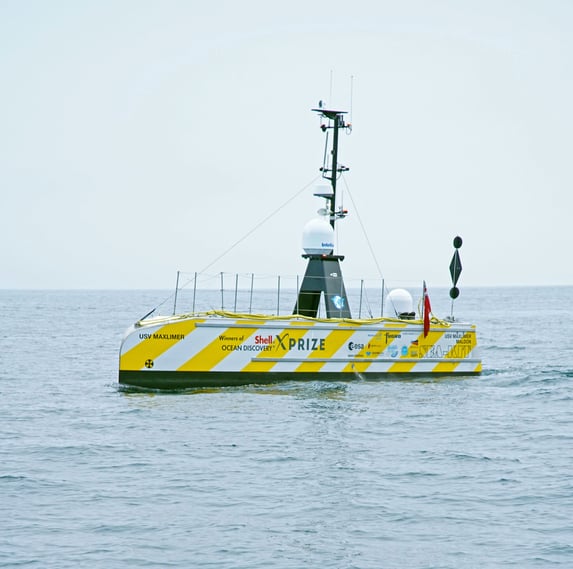
Training Setup At Trafikverket
The image shows a training setup of the bridge on a road ferry. In front of the helmsman, video screens display a real-time simulation of the intended passage.
Onboard radios are seamlessly controlled using SoftRadio, both from the ship's bridge and remotely from operator stations, ensuring efficient and reliable communication.
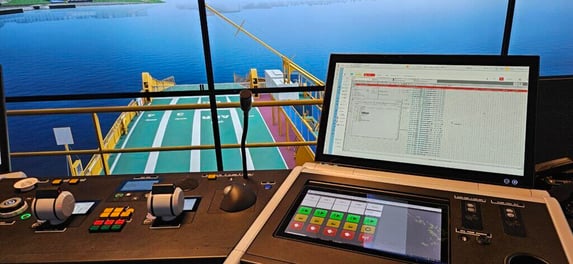
Operator Position At Trafikverket
The image depicts a training setup of a road ferry bridge, where the helmsman navigates using video screens displaying the planned passage.
SoftRadio enables remote control of the onboard radios, both from the ship’s bridge and operator stations, ensuring seamless communication.
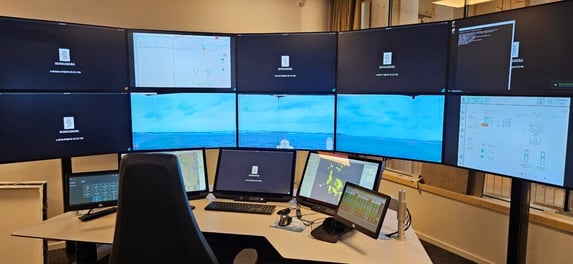
Serving several vessels at the same time
With SoftRadio, a single operator can manage multiple radios across different ships simultaneously.
The software seamlessly integrates various radio types, allowing operators to handle both marine and port communications, as well as phone calls.
Multiple operators can work with the same ships in parallel, whether sitting side by side or working from different locations, even across continents.
For added security and compliance, Mimer VoiceLog enables recording of all communications within the system.
The system image on the left showcases one operator working with radios on several vessels and a local radio at a harbour.

Working from several dispatch sites
SoftRadio enables operators to manage multiple radios across different vessels simultaneously, providing a flexible and efficient solution for maritime communication.
Radios on board ships, as well as those located elsewhere, can be connected via a variety of IP connections, allowing for customized setups to meet specific needs. For example, two vessels might utilize 4G connectivity, one vessel could be connected via satellite IP, while a land-based radio might be linked through a fixed IP line.
Moreover, operators can be located at various sites and connected through different methods, facilitating seamless operations regardless of their physical location.
This flexibility enables the establishment of remote control centers across different regions and time zones, ensuring that ship operations can be managed from the most optimal location at any given time.
The system image on the right showcases operators at several sites working with several ships.
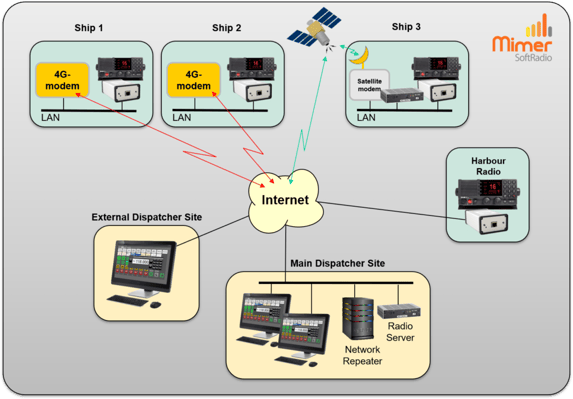
Remote control of other onboard equipment
PA, Foghorn and Ambient listening
The SoftRadio system also supports various other forms of remote control. For instance, we have developed a custom network interface connected to an external horn speaker on the vessel. This feature allows operators to use the horn speaker for public address (PA) announcements, horn signals, or as a foghorn with preprogrammed repeating fog signals.
Additionally, the PA and Foghorn interface includes a microphone input for ambient listening, enabling operators to monitor the environment around the ship. To optimize data usage over satellite links, the audio feed from the ambient microphone can be disabled when not required.
For further details, click here
The system image on the left showcases operator working with both a radio and with other equipment onboard the ship.
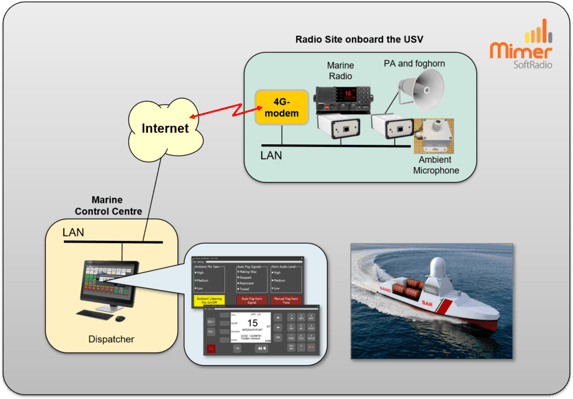
HF/MF Radio
Certain vessels require HF/MF radios on board, and naturally, these radios need to be integrated into the remote control system alongside other onboard communication equipment. This is now achievable with the Sailor 6300-series of radios, which are fully compatible with remote control functionalities.
For more information, click here
Navtex Receiver
Similar to the HF/MF radio, some vessels also require a Navtex receiver onboard, which must be remotely controlled from the MCC. This functionality is now available with the Sailor 6390 Navtex receiver.
For more details, click here
The system image on the left showcases VHF-, HF/MF-radios and Navtex remote controlled over satellite IP
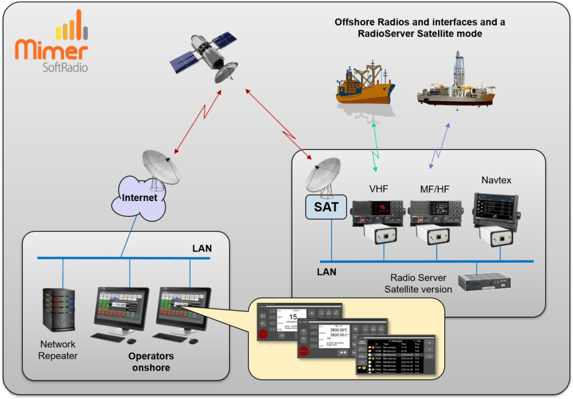
Radio for intercom
When personnel are occasionally onboard, communication with them from the onshore control center is essential. For this purpose, an additional remote-controlled radio can be installed on the vessel, operating on a UHF channel or a full-duplex Vokkero system. Onboard personnel can be equipped with handheld devices linked to this system, enabling seamless communication. The onshore helmsman can communicate directly with the onboard personnel, while the personnel can also communicate with each other.
In addition, other interfaces with I/O ports can be integrated into the system for various onboard applications.
The system image on the left showcases Radio, Intercom and PA

System Examples




Helpful SoftRadio Options
Enhance your communication capabilities with our specialized SoftRadio Options.
Explore the right solution for you
DSC & ATIS
For calling other ships and receiving calls from coastal stations. Ensures stable and reliable marine communication.
PA and FogHorn
A remote-controlled interface offshore for PA speakers, fog horn signaling, and ambient listening microphones.
Phone connection
Operators manage phone and radio calls from the same system, ensuring seamless communication and accessibility.
Satellite mode
Special server versions handle latency and jitter issues to ensure stable and reliable communication via satellite.
Low Bandwidth
Optimized network interface reduces data usage, ensuring cost-effective connectivity, especially via satellite.
